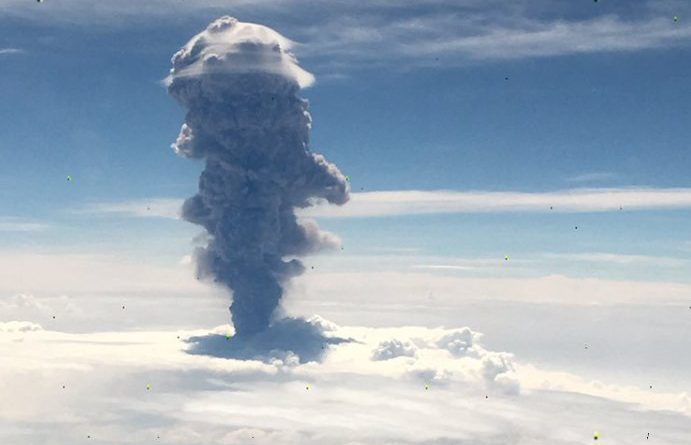The Volcanic Ash Advisory Center (VAAC) Washington has warned of a thick ash column rising to at least 32,000 feet (9.8 km) a.s.l. and moving in a NE direction at 30-35 kts .
Particulates ejected to altitudes above 32,800 feet (10km) or FL328 —and into the stratosphere— have a direct cooling effect on the planet.
Twitter was quickly clogged with awesome photos and footage:
Esta mañana el volcán Popocatépetl #DonGoyo registró una explosión a las 10:40 y generó una columna de una altura aproximada de 5 mil metros de altura con contenido moderado de ceniza.El semáforo de #AlertaVolcánica permanece en #AmarilloFase2 (📹@garzaec) pic.twitter.com/CPXKI8O5up
— LupitaJuarez (@LupitaJuarezH) June 14, 2019
#Popocatépetl is mad today#mexicovolcano pic.twitter.com/TYbRNO5JNz
— hank tetreault (@faahank) June 14, 2019
Popocatépetl, whose name means Smoking Mountain in Nahuatl, the language of the Aztecs, sprang back to life in 1994 (solar minimum of cycle 22) after half a century of quiescence.
Over the past few months, violent activity at the volcano has increased tenfold, correlating neatly with the sharp drop-off in solar activity (see 'UPTICK' below).
BACKGROUND
Stratovolcano: 5426 m / 17,802 ft
Central Mexico: 19.02°N / -98.62°W
Current status: ERUPTING (4 out of 5)
Eruption list: 1345-47, 1354, 1363(?), 1488, 1504, 1509(?), 1512, 1518, 1519-23(?), 1528, 1530, 1539-40, 1542, 1548, 1571, 1580, 1590, 1592-94, 1642, 1663-65, 1666-67, 1697, 1720, 1802-04, 1827(?), 1834(?), 1852(?), 1919-22, 1923-24, 1925-27(?), 1933, 1942-43, 1947, 1994-ongoing
For more see VolcanoDiscovery.com
UPTICK
Seismic and Volcanic activity has been correlated to changes in our sun.
The recent global uptick in earthquakes and volcanic eruptions is likely attributed to the drop-off in solar activity, coronal holes, a waning magnetosphere, and the influx of Cosmic Rays penetrating silica-rich magma.
Check out these links for more info.




Time to wake up.
Civilisations, have been wiped any, many times, and we'll not be the last.